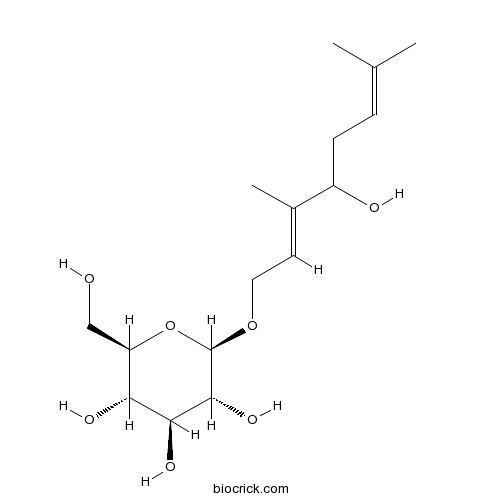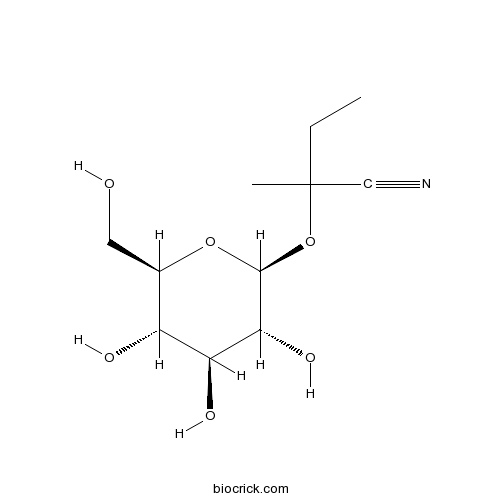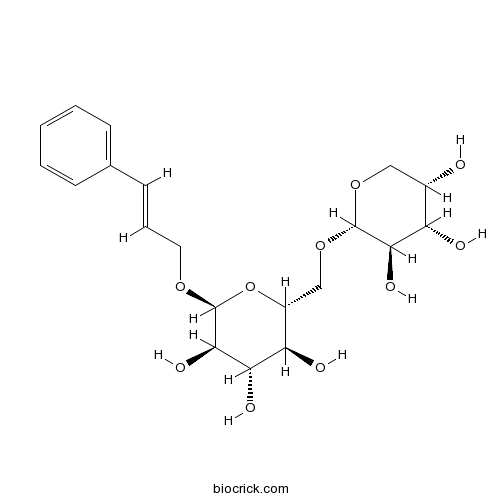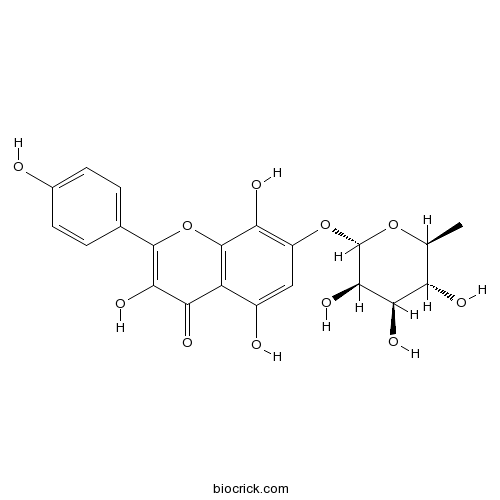Rhodiola sachalinensis
Rhodiola sachalinensis
1. The products in our compound library are selected from thousands of unique natural products; 2. It has the characteristics of diverse structure, diverse sources and wide coverage of activities; 3. Provide information on the activity of products from major journals, patents and research reports around the world, providing theoretical direction and research basis for further research and screening; 4. Free combination according to the type, source, target and disease of natural product; 5. The compound powder is placed in a covered tube and then discharged into a 10 x 10 cryostat; 6. Transport in ice pack or dry ice pack. Please store it at -20 °C as soon as possible after receiving the product, and use it as soon as possible after opening.
Natural products/compounds from Rhodiola sachalinensis
- Cat.No. Product Name CAS Number COA
-
BCN5970
Rosiridin100462-37-1
Instructions

-
BCN7848
(2RS)-Lotaustralin1973415-50-7
Instructions

-
BCN5653
Kaempferol520-18-3
Instructions

-
BCN5968
Rosavin84954-92-7
Instructions

-
BCN1248
Rhodionin85571-15-9
Instructions

-
BCN4546
4-Hydroxybenzoic acid99-96-7
Instructions

Fermentative Production of Phenolic Glucosides by Escherichia coli with an Engineered Glucosyltransferase from Rhodiola sachalinensis.[Pubmed: 28547990]
None
Production of Cinnamyl Alcohol Glucoside from Glucose in Escherichia coli.[Pubmed: 28229589]
Rosin, a cinnamyl alcohol glucoside, is one of the important ingredients in Rhodiola rosea, which is a valuable medicinal herb used for centuries. Rosin displayed multiple biological activities. The traditional method for producing rosin and derivatives is direct extraction from R. rosea, which suffers from limited availability of natural resources and complicated purification procedure. This work achieved de novo biosynthesis of rosin in Escherichia coli. First, a biosynthetic pathway of aglycon cinnamyl alcohol from phenylalanine was constructed. Subsequently, the UGT genes from Rhodiola sachalinensis (UGT73B6) or Arabidopsis thaliana (UGT73C5) were introduced into the above recombinant E. coli strain to produce rosin. Then the phenylalanine metabolic pathway of E. coli was optimized by genetic manipulation, and the production of rosin by the engineered E. coli reached 258.5 ± 8.8 mg/L. This study lays a significant foundation for microbial production of rosin and its derivatives using glucose as the renewable carbon source.
[Effect of methyl jasmonate on salidroside and polysaccharide accumulation in Rhodiola sachalinensis callus].[Pubmed: 25775803]
To provide a new material for producing the Rhodiolasachalinensis products, the effect of methyl jasmonate (MeJA) on callus biomass and effective compound accumulation of Rhodiolasachalinensis was studied.
Genetic, epigenetic, and HPLC fingerprint differentiation between natural and ex situ populations of Rhodiola sachalinensis from Changbai Mountain, China.[Pubmed: 25386983]
Rhodiola sachalinensis is an endangered species with important medicinal value. We used inter-simple sequence repeat (ISSR) and methylation-sensitive amplified polymorphism (MSAP) markers to analyze genetic and epigenetic differentiation in different populations of R. sachalinensis, including three natural populations and an ex situ population. Chromatographic fingerprint was used to reveal HPLC fingerprint differentiation. According to our results, the ex situ population of R. sachalinensis has higher level genetic diversity and greater HPLC fingerprint variation than natural populations, but shows lower epigenetic diversity. Most genetic variation (54.88%) was found to be distributed within populations, and epigenetic variation was primarily distributed among populations (63.87%). UPGMA cluster analysis of ISSR and MSAP data showed identical results, with individuals from each given population grouping together. The results of UPGMA cluster analysis of HPLC fingerprint patterns was significantly different from results obtained from ISSR and MSAP data. Correlation analysis revealed close relationships among altitude, genetic structure, epigenetic structure, and HPLC fingerprint patterns (R2 = 0.98 for genetic and epigenetic distance; R2 = 0.90 for DNA methylation level and altitude; R2 = -0.95 for HPLC fingerprint and altitude). Taken together, our results indicate that ex situ population of R. sachalinensis show significantly different genetic and epigenetic population structures and HPLC fingerprint patterns. Along with other potential explanations, these findings suggest that the ex situ environmental factors caused by different altitude play an important role in keeping hereditary characteristic of R. sachalinensis.
Testing Rhodiola sachalinensis saccharide as cryoprotectant for bovine spermatozoa.[Pubmed: 23992977]
Rhodiola sachalinensis saccharide (RSS) was extracted from the rhizome of Herba Rhodiolae and was expected as a novel cryoprotectant. The aim of this study was to test the effects of RSS on motility of bull sperm and the activities of superoxide dismutase (SOD), lactate dehydrogenase (LDH), and glutamic oxaloacetic transaminase (GOT) in bull sperm during cryopreservation. Rhodiola sachalinensis saccharide was added at the concentrations of 0.02, 0.04, 0.06, 0.08, and 0.10 mg/mL to the extenders, which were used to store bovine semen. It was found that the RSS-added extends resulted in a higher percentage of cryopreserved sperm motility, mitochondrial activity, and membrane and acrosome integrity than those of RSS-free extenders. The SOD, LDH, and GOT activities were all decreased during the process of freezing and thawing. The extenders supplemented with RSS improved the SOD, LDH, and GOT activities after cryopreservation compared with the RSS-free groups. In conclusion, RSS conferred great cryoprotective capacity to the basic extender for bull spermatozoa during the process of freezing-thawing, and the optimal concentration of RSS for the extender was 0.06 mg/mL.


